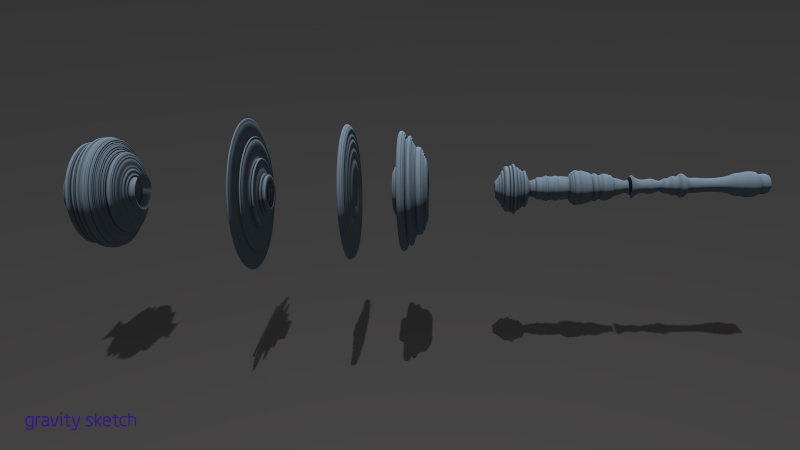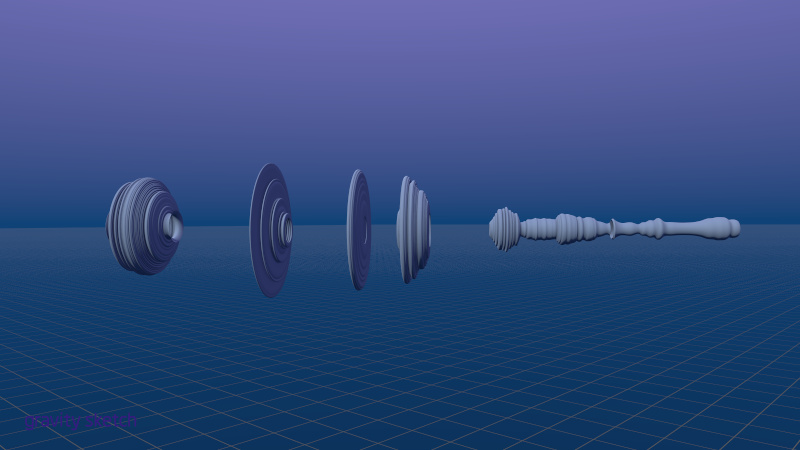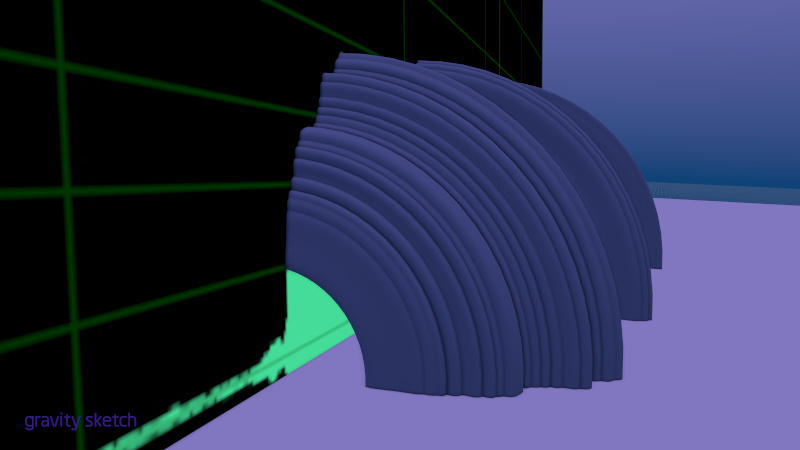
The Volume of Language
by Melody Owen
- View Melody Owen's Biography
Melody Owen is an interdisciplinary, conceptual artist doing PhD research in zoosemiotics and virtual worlds at UNSW.
The Volume of Language
Melody Owen
This piece is the volumetric blueprint of a voice. It is just a few seconds of an utterance, captured, printed as a soundwave, and formed into a three-dimensional structure to be placed within a virtual space. I am calling these structures "Sound Houses" and designing them specifically for social, virtual worlds.
The form I submit is my first sound house. It is a few seconds of the Tui bird in New Zealand and was sourced from the New Zealand Department of Conservation website, where they generously offer a wealth of bird song recordings for anyone to use. Because this is my first iteration, there are several design flaws. The most important of which is that the mesh is too dense. Virtual worlds, and specifically web based worlds, require a high amount of optimisation in order to run smoothly. The next phase of sound houses will look the same externally, but with less internal scaffolding.
These places can be visited by multiple avatars at once. Avatars are our individual representations within worlds. Like in a video game, we project ourselves into a figure or a character. This could be human or animal or a mix between. Some avatars are simply shapes. They are moved within a 3D space using a mouse and a keyboard. Within this space, we can look around and interact with others.
The first time I visualised bird song was in a dream. I looked up into the blue and saw their voices scratched into the sky as a white scrawl. Around the same time, I had a meaningful encounter with a beluga whale at an aquarium in Chicago. I began thinking about animal voices then. The feeling that communication and language was everywhere in the natural world — that what we tend to understand as sound or noise, is in fact bursting with intelligence and emotion. I began to think about sound visually and in three dimensions and wrote in my notebook, "The volume of language."



In 2007, I designed a chandelier based on the sound waveforms of birds. This was eventually installed down the center of a spiral stairway, 30 feet of glass, and LED lights and sound. I was responsible for the concept and design but the immense work of creation and installation was accomplished by others. Now, that I am working in virtual spaces, I can build huge structures by myself with mesh and code.
Language and reality are embodied. Our physiology and our experiences shape how we understand the world. We like to think there is one reality, but there are as many iterations of reality as there are beings on the earth. Even within our own species, there are vast differences in perception depending on a huge array of variables. If you accept that every living being is a form of emotional intelligence experiencing the world, then there are infinite variations of color, scale and sensation.
At the same time, there are an infinite number of intersections, commonalities and shared realities — play, joy, hunger, fear, love, language — these attributes cut through and across species lines. We are entangled together; us with the animals; with the plants; with mycology. We evolved together, though we (humans) now stand apart. This separation lies at the heart of the environmental peril we all now face.
I work in virtual worlds because they are places in which our normalised version of reality — anthropocentric reality — can be challenged. Physics and scale can be rebuilt. Anything is possible. If we choose to, we can use it as a tool by which to imagine the reality of other species.
The methodology I am using is simple, I am creating virtual world structures based on the sound wave forms of the voices of birds. This form does not convey the meaning it contains, but it is an envelope around the meaning. It provides an opportunity to project ourselves into a spatialised voice, to listen and interact in a way that is different from the how we do so in the physical world and hopefully to think differently about the voices of the others with whom we are entangled.

